In January, Ken Brey and I passed the AIA’s “Certified Vision Professional – Advanced” exam. Passing the exam proved that we have a high level of knowledge about developing and integrating machine vision systems, and added our names to the list of CVP-Advanced members. This certification is also one of the requirements to be listed as one National Instrument’s Alliance Partners, with a specialty in Vision.
Prior to the exam, I attended the AIA’s week-long training course that focused on building the required knowledge for designing and implementing a successful machine vision system. The courses were taught by experts from machine vision companies such as: Cognex, SICK, Fanuc, Teledyne DALSA, GE, Schneider Optics, etc. Some of the material was a review of topics I have learned from experience while working on various vision projects at DMC, but most of the courses provided some interesting insights and tips that will surely be useful on future projects. Some of the most interesting and useful courses were:
- Advanced Optics for Machine Vision – Understanding lens specifications and choosing the best lens for your application.
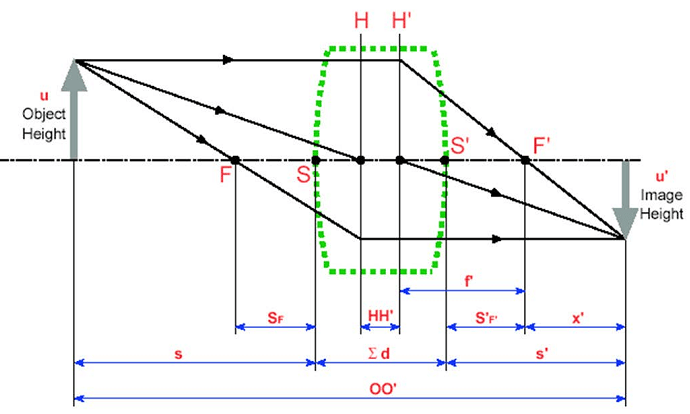
- Advanced Vision Lighting – Choosing the proper lighting strategy in order to maximize the signal to noise ratio in the image, accounting for surface type, geometry, color, and motion.

- Advanced Camera and Image Sensor Technology – Understanding how the image sensors used for Machine Vision work, and the advantages/disadvantages of each.
- 3D Vision System Development – Overview of the various technologies available for 3D machine vision, including Stereo vision, Laser Triangulation, Spatially-coded Light, Time-of-flight, and how they apply to real-world applications, such as robotic bin-picking.
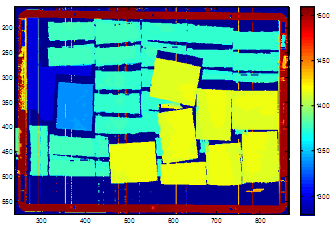
- Advanced Vision Guided Robotics – Using 2D and 3D to cameras to guide a robot to a part’s location by maintaining a relationship between the robot and camera frame of reference.
- Metrology and 2D Calibration Techniques – Calibrating a camera properly to allow for highly-accurate measurements.
- Particle Analysis and Classification Techniques – Tips and tricks regarding image processing in order to extract information about the objects of interest while ignoring background noise.
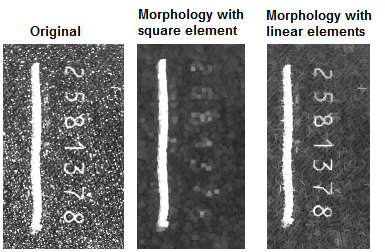
- Designing High-Speed and Line-scan Vision Systems – Reducing latency in order to achieve determinism, working with real-time operating systems, and also using use a line-scan camera for applications such as web-inspection.
The AIA also offers a CVP-Basic training course and exam, for someone who does not have any experience with Machine Vision, but would like to learn.
The AIA CVP training course took place at McCormick Place in Chicago, during the Automate 2013 conference. The trade show floor was filled with some of the most well-known robotics and vision vendors. Among the list of booths were many companies that DMC has worked closely with for vision and automation projects, such as National Instruments, Basler, Yaskawa, SICK, Flir, Spectrum Illumination, Ixmation, Edmunds, Midwest Optical Systems, and others.
In between vision courses, I had a little bit of time to explore the trade show floor, and I was impressed with the various demonstrations of robots performing rapid pick-and-place operations, such as this machine made by Yaskawa:
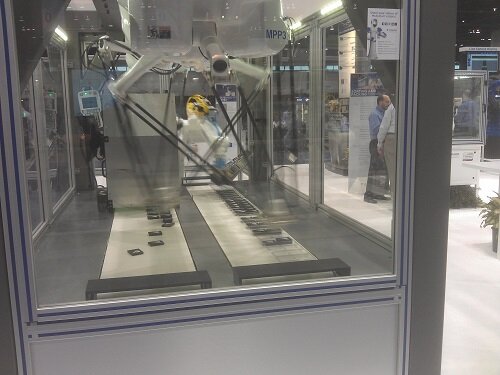
Or this cool bin picking demo by Fanuc, grabbing hockey pucks out of a jumbled bin:
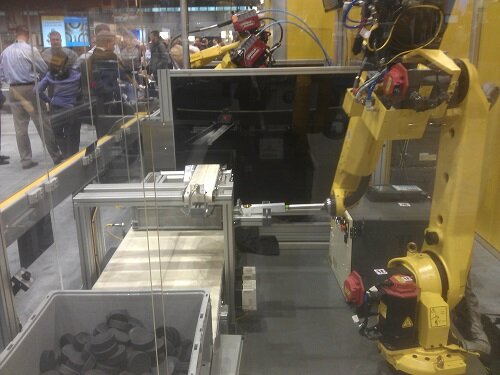
Overall, the AIA vision training and the Automate 2013 conference were a worthwhile learning experience, and the certification at the end of the week was nice recognition of all that I have learned.